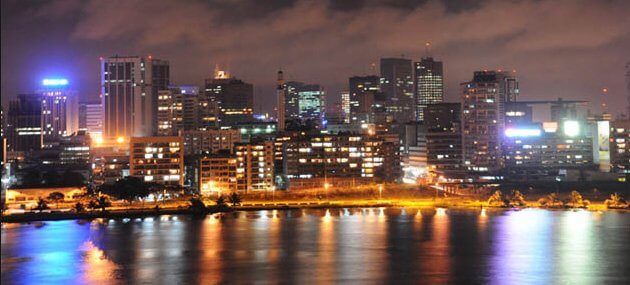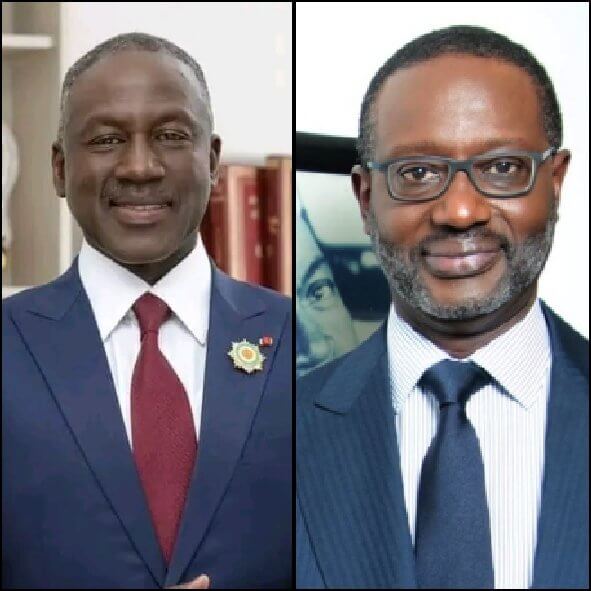[Africa Diligence] Standard Chartered vient de publier son Trade 20 Index, l’étude qui identifie les 20 économies mondiales au plus fort potentiel de croissance commerciale.
La Côte d’Ivoire et le Kenya sont en pole position. Qu’est-ce qui explique la place de ces deux pays africains à un tel niveau de performance ?
Premier dans l’indice du commerce de Standard Chartered fraîchement publié, la Côte d’Ivoire apparaît comme le pays au plus fort potentiel de croissance commerciale future au monde.
Le Kenya arrive troisième du Trade20 Index, derrière l’Inde et devant la Chine.

Pour arriver à ces conclusions, les experts de la banque britannique ont analysé 66 économies à travers le monde, dont 14 en Afrique. Le potentiel de croissance du commerce dans chacune de ces économies a été déterminé sur la base de trois critères. D’abord le dynamisme économique qui prend en compte la croissance du PIB, la croissance du volume des exportations, ensuite la préparation au commerce pour évaluer jusqu’à quel point le marché local dispose d’assises solides pour soutenir la croissance commerciale future. A ce niveau, les analystes ont notamment regardé la qualité des infrastructures, la pénétration du commerce électronique ou les conditions du Doing Business. Le troisième est spécifiquement celui de la diversification des exportations.
Le Trade20 révèle que les principaux marchés de la région Asie-Pacifique, de l’Afrique et du Moyen-Orient affichent des progrès particulièrement impressionnants dans le potentiel de croissance du commerce. Les marchés émergents plus petits tels que la Côte d’Ivoire, le Kenya et Oman sont sur une trajectoire ascendante, progressant à partir d’un point de départ relativement bas, commente José Vinals, président de Standard Chartered.
Une croissance du PIB supérieure à 7% en Côte d’Ivoire.
La Côte d’Ivoire doit son classement à la manière par laquelle elle est passée, en l’espace de sept ans, d’une économie déséquilibrée par la crise sociopolitique à l’économie la plus dynamique d’Afrique francophone. Même si la Côte d’Ivoire devra faire l’effort de maintenir un trend haussier de ses Investissements Directs Etrangers (IDE), les analystes de Standard Chartered s’attendent à ce que la croissance du PIB dans ce pays ouest-africain reste au-dessus des 7% au cours de la prochaine décennie.
« Comparée aux autres économies africaines, la Côte d’Ivoire dispose d’infrastructures relativement développées. Abidjan, le principal centre urbain de ce marché, a étendu son port et son aéroport, renforçant ainsi sa position de pôle d’affaires clé pour l’Afrique de l’Ouest. L’augmentation des dépenses publiques a stimulé l’industrie manufacturière du marché et l’administration s’efforce également d’améliorer le climat général des affaires », commentent les auteurs de l’étude.
Le Kenya fait la part belle aux investissements dans les infrastructures
Le Kenya, quant à lui, mange les fruits de ses récents investissements dans les infrastructures qui ont boosté sa préparation au commerce international, estiment les experts à l’origine du Trade20 Index. En outre, « Big Four Agenda » nourrit également l’optimisme autour du potentiel du Kenya dans le commerce mondial, selon le rapport. Pour rappel, ce vaste plan de développement annoncé par le président Uhuru Kenyatta fin 2017 vise à inscrire le Kenya dans le cercle encore fermé des pays émergents d’ici à 2022. L’un des principaux objectifs de cette stratégie est de faire de l’industrie manufacturière le principal pourvoyeur de richesse. En revanche, estime le rapport de Standard Chartered, l’Etat devra maintenir son endettement à un niveau acceptable et le secteur privé aura besoin du coup de pouce des banques via un allègement des taux d’intérêt, afin de faciliter davantage le financement des PME et PMI. Pas plus tard que fin août dernier, le chinois Sunda y lançait une usine de couches pour bébés, présentée comme la plus grande d’Afrique de l’Est.
La Rédaction (Avec Pana Press et HMB)
Our new Trade20 index reveals the rising stars of global trade
Press releases Standard Chartered Bank
23 September 2019
Côte d’Ivoire, Kenya and Ireland join India and China in the top five of 20 markets with the greatest potential for future trade growth
London – New research from Standard Chartered reveals the 20 markets with the greatest potential for future trade growth. The Trade20 index demonstrates that while existing trade powers like China and India continue to rapidly improve their potential, smaller trading nations are also making swift progress towards increased trade growth.
Fifteen of the Trade20 markets are in Asia-Pacific, Africa or the Middle East, and emerging markets dominate. Smaller, emerging markets like Côte d’Ivoire – at number one in the index – Kenya and Oman are on an upward trajectory, progressing at pace from a relatively low starting point. Buoyed by regional trade deals and liberalising economies, several ASEAN countries including Vietnam, Indonesia, Thailand and the Philippines also rank highly. Ireland, as the highest performing European market, owes its high ranking to its economic dynamism driven by increased levels of foreign direct investment.
The research determined each market’s potential for trade growth by analysing changes across a wide range of variables over the last decade. These were grouped into three equally-weighted pillars: economic dynamism, trade readiness and export diversity.
José Viñals, Group Chairman, Standard Chartered: “The Trade20 index points towards the strong potential of a number of markets outside the China-US-Europe trade axis. With rising protectionism casting a shadow over the future of world trade, it is encouraging that many emerging markets are still improving their trade growth potential for the medium term, forging new regional trade deals to make this happen.
“Markets that are demonstrating the most impressive pace of progress may represent interesting opportunities for corporates seeking new investment, import and supply chain partners. With healthy trade fundamental to economic growth and prosperity, the Trade20 represent the rising stars of global trade: Those with the greatest potential for future trade growth.”
Key findings are:
The ASEAN accelerators
The Trade20 points to accelerated Asian trade growth potential, with particularly impressive performances by Vietnam, Indonesia and Thailand. Regional trade deals, infrastructure improvements, and legislative reforms are promoting increased openness.
China: the engine of global growth
The research shows that the higher a market’s trade growth with China, the better that market performs in terms of economic dynamism and trade readiness, showing that China is a major force for dynamic improvement in markets both near and far.
India: promising improvements
India performs well in the Trade20, largely driven by its trade readiness performance. The government’s efforts to prioritise trade as a key engine of growth and make the country more attractive to business are keeping it on an upward trajectory.
Financial hubs remain in the ascendant
Banking centres Hong Kong and Singapore rank much higher than most other developed economies, demonstrating progress in trade growth potential despite their market status. Their key strength is economic dynamism: already-high levels of foreign direct investment continue to increase.
Three markets lead the way for Africa
Some markets that were lacking trade potential momentum until recently are now growing and modernising their economies: Côte d’Ivoire and Kenya are leading the pack and Ghana also performs well. Improvements in trade readiness – in particular infrastructure investments and increasing ease-of-doing business scores – is behind their impressive Trade20 rankings.
Middle Eastern markets diversify
Three Middle Eastern markets achieve a place in the Trade20: Oman, the UAE and Bahrain, propelled by export diversity improvements. This indicates the economies that are successfully moving away from over-reliance on oil.
Ireland stands out in Europe
European markets mostly rank outside the Trade20, predominantly because they are developed economies so the space to grow their trade potential further is limited. Multinational magnet Ireland stands out as a notable exception: it is the only EU country to appear in the Trade20, driven primarily by its high levels of economic dynamism.
In Latin America, Chile pulls ahead
Unlike emerging markets in other regions, Latin American economies score less well. Chile is the only American market to achieve a place in the Trade20, with its scores propelled by infrastructure and e-commerce improvements.
Trade20 examines 12 metrics across 66 global markets – the major global economies plus the major economies in each region – to reveal the 20 economies that are most rapidly improving their potential for trade growth.
While most traditional trade indices are based on a market’s present performance, the Trade20 index captures changes over time to reveal the markets that have seen the most improvement over the last decade. This reveals the economies where recent positive developments may point to an acceleration in trade growth potential.
View the Trade20 report here.
For further information please contact:
Josephine Wong
Group Media Relations
+65 6596 4690
Trade20 index and methodology
Trade20 examines 12 metrics across 66 global markets – the major global economies plus the major economies in each region – to reveal the 20 that are most rapidly improving their potential for trade to grow.
The Trade20 index
1. Côte d’Ivoire
2. India
3. Kenya
4. China
5. Ireland 6. Vietnam
7. Indonesia
8. Thailand
9. Oman
10. UAE 11. Hong Kong
12. Russia
13. Ghana
14. Sri Lanka
15. Bahrain 16. Singapore
17. Switzerland
18. Chile
19. Turkey
20. Philippines
These markets are identified by measuring changes in 12 metrics under three pillars: economic dynamism (foreign direct investment, export and GDP growth), trade readiness (infrastructure, e-commerce, and ease of doing business) and export diversity (the range of exports).
While most traditional trade indices are based on a market’s present performance, our index captures changes over time to reveal the markets that have seen the most improvement during the last decade. This enables us to identify the economies where recent positive developments may point to an acceleration in trade growth potential. Higher exports are strongly correlated with higher imports, of both capital and consumer goods, offering opportunities for companies worldwide. A high ranking also suggests a market that is improving as a possible outsourcing location.
It is important to note that some markets are progressing fast from a low starting point, while others are moving quickly from an already-high starting point. The study does not look at the trade growth potential of each market in absolute terms, but at its individual potential for trade growth relative to its size. In absolute terms, large economies will, of course, offer greater potential and opportunity overall than smaller ones.
To view the Trade20 video visit: sc.com/trade20
Standard Chartered







Commentaires Facebook